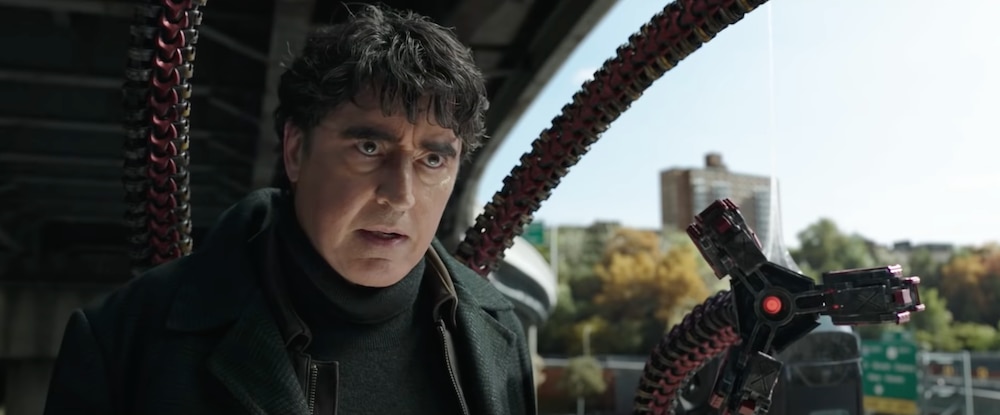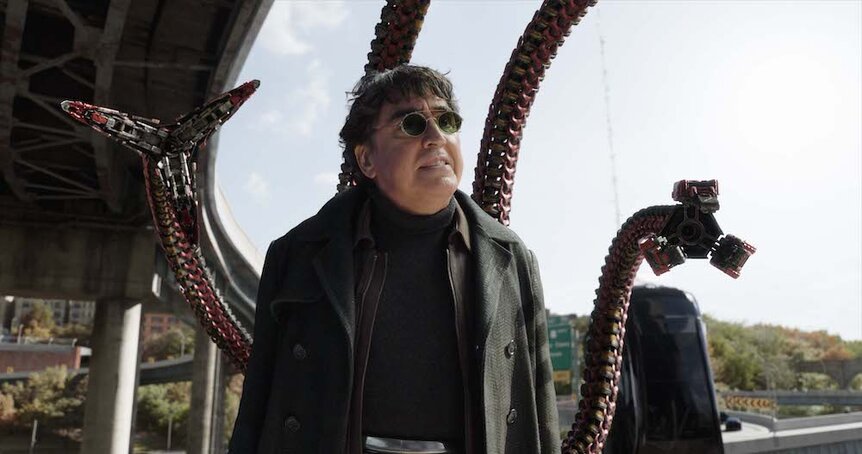Create a free profile to get unlimited access to exclusive videos, sweepstakes, and more!
'No Way Home' had a secret connection to Spider-Man 2's Doc Ock beyond the return of Alfred Molina
Molina had a few extra hands — or should we say tentacles? — working behind the scenes.

The power of the sun... in the palm of his (many) hands. Turns out Alfred Molina wasn't the only Spider-Man 2 alumnus who had a hand (or should we say tentacle?) in the production of No Way Home. During an interview with Variety, VFX supervisor, Kelly Port revealed that a number of the film's visual effects artists (particularly those employed by Digital Domain) had previously worked on the 2004 Sam Raimi sequel, helping bring Doctor Octopus to life the first time around.
"When I would have an animation note about how Doc Ock walks, they’d be like, ‘Excuse me, but this is the animator who did it in the previous movie,’ so I’d stand corrected but still ask them to do the note," Port recalled in good humor.
Despite a number of CGI shots and touch-ups, Spider-Man 2's depiction of Otto Octavius was almost 100 percent practical, with the antagonist's mechanical appendages controlled by a full team of puppeteers. For No Way Home, however, director Jon Watts & Co. opted for purely CGI tentacles — something that was not lost on Raimi, who hailed Molina's de-aged return during an exclusive conversation with SYFY WIRE several months before the movie's theatrical release.
"He looks great, the animation’s great," Raimi told us. "I’m assuming it’s not puppeted because when we did Doc Ock, we had puppets and animation for his octopus tentacles. But it was smooth and powerful and I loved his costume they kept [from the original]. I think it’s gonna be a great movie."
A very grumpy Doctor Octopus shows up shortly after Doctor Strange's botched memory spell, demanding to know what's become of his perpetual energy machine. He battles Tom Holland's version of Peter Parker, only to realize that the Spider-Man he's fighting is not the one he knows from back home. According to Port, the thrilling set piece required "over 30 billion rendered polygons," which "wouldn’t have been possible not too long ago, just in terms of rendering power."
"The pitch was excellent," Molina remarked during a villainous Q&A held in honor of Brazil's CCXP last month. "To be honest, when the idea was first suggested, my first thought was, 'Hang on, I'm 17 years old, I've got chins, I've got wrinkles. What are they gonna do?' And then, of course, I suddenly realized, 'Wait, a minute, they've got the technology, this isn't gonna be a problem.' But it's been very nice to come back to something that is familiar, but at the same time, completely new because the technology has moved on phenomenally in the last couple of decades. It's still exciting."
Spider-Man: No Way Home is currently playing in theaters everywhere. With just over $1 billion in global ticket sales, the film is the twelfth highest-grossing movie in box office history. Sadly, it'll be the only Spider-Verse content on the big screen for awhile following Sony's recent decision to postpone Morbius for the sixth time to early April.



























